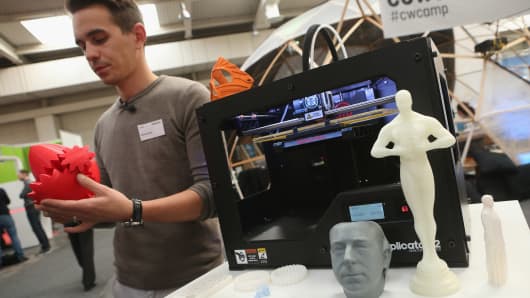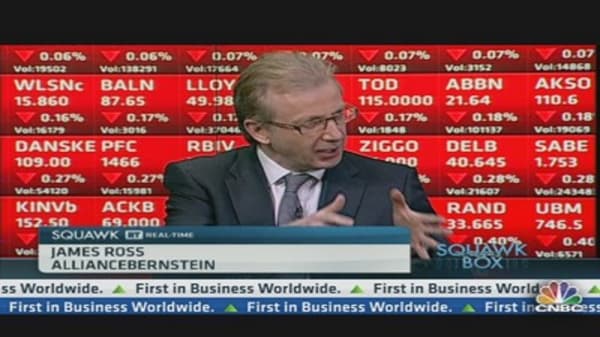We are standing at the cusp of a computing and industrial revolution with the use of 3-D printers, one technology expert said at a conference recently.
"Once in a generation a new technology comes along that has the potential to transform just about everything—think printing press, steam engine, telegraph and now 3-D printing," Jim Kohlenberger, a former chief of staff in the White House Office of Science and Technology, said at a conference in Brooklyn, New York on Monday evening.
Kohlenberger was joined at the event—hosted by the Brooklyn Futurists—by panelists from 3-D printing companies including Robert Steiner, the director of product development for MakerBot; Duann Scott, a designer for Shapeways, and JF Brandon, a designer for D-Shape.
(Read More: Rethinking Objects and Form Are Key to 3-D Printing Revolution)
Three-dimensional printing, or additive manufacturing, builds three-dimensional solid objects layer by layer with a printer that uses a digital model as a blueprint. Basically, designers can use software to create a template for a product and the printer reads the design pattern to make the object one layer at a time, using materials such as plastic, glass, ceramic or steel.





